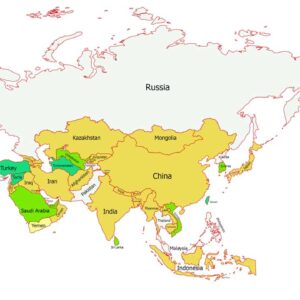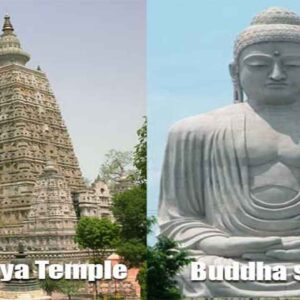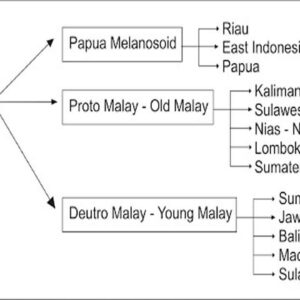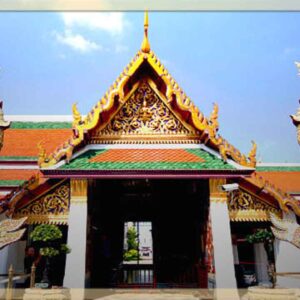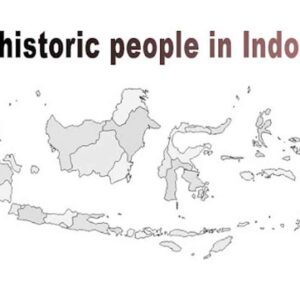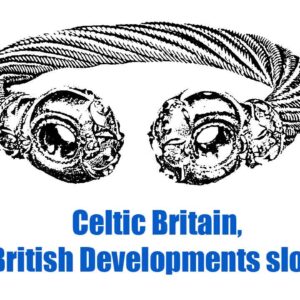From the time Man first appeared in Britain over a quarter of a million years ago, wave upon wave of invaders from overseas raided and then settled the land. But with the Norman Conquest in 1066 all this was to change. Britain was never again successfully invaded by any other nation.
Britain is Born
Six thousand million years ago our solar system was born. The planets were created, and there was earth. For millions of years, the surface of the earth changed. Europe was joined to North America; Britain to Europe. The present North Sea was once a scorching desert. Later, it became a vast forest. There were volcanoes to the northeast of Scotland.
The first part of Britain to emerge from the sea was a chain of small islands. Today, they are the peaks of mountains in the Highlands and Western Isles of Scotland. As the pattern became clearer, volcanoes tore the land apart and reshaped it.
The earth folded itself into creases. Eventually, they became hills and valleys. The granite of Cornwall was created by the red hot flow of lava. Elsewhere, there were huge forests and sweltering swamps.
At intervals, there were four long periods of cold. They were called the Ice Ages. We shall never know anything like them. The glaciers came from the north until they reached the edge of what is now London. But, in between each Ice Age, the climate was quite warm.
Just as the shape of the land changed, so did the creatures the inhabited it. At one time, there were monsters such as dinosaurs (massive lizards with tiny heads) and pterodactyls (flying reptiles).
Saber-toothed tigers roamed in what is now the Thames valley. Later, during the Ice Ages, there were elephants and rhinoceroses. But, because it was so cold, they had long and shaggy fur coats.
The First People
Half a million years ago, man-like creatures were roaming the earth. They were probably able to make and use stone implements; they almost certainly knew how to build fires. According to one estimate, there were about two hundred of them in Britain.
Two hundred and fifty thousand years later, these ancestors of present-day man had become more recognizably members of our species. We know this from pieces of a human skull that were discovered in a quarry at Swanscombe in Kent one day in 1936. Some fragments of flint were also found. They had probably been used as axes.
How did these people from the early morning of history live? They moved from one forest clearing to the next; from one cave to another. Life was a never-ending search for food. They hunted the woolly rhino, the mastodon (a hairy elephant), and wild horses.

For the rest of their diet, they lived off roots, berries, and insects. By trial and error, they discovered what was poisonous, and what was not. When there was no other meat, they probably became cannibals.
They manufactured their weapons by chipping bits off large lumps of stone. Somehow they communicated with one another by signs and grunts. They could not speak, for they had no language.

Britain, still joined to Europe, was visited by parties of hunters from elsewhere. They too, explored the heathlands and the forests, searching for food. In about 20.000 BC the last of the Ice Ages began to melt away. In the wake of the cold, enormous pine forests grew up. No sun shone in these places; there was very little game to be found.

At last-by about 12.000 BC- the ice finally receded. People were now learning how to make tools and weapons from bones as well as flints; to cover their nakedness with skins. They even carved female figures from stone, which had, or so they believed, the power of magic. What was more important, people had now learned how to speak.
Roughly 5000 years ago the land link with Europe was broken. The Straits of Dover were created, and the pines began to yield to deciduous trees such as oaks. It had taken a long, long time; but so many things now became possible.
Man copped down trees, cleared space in the forests, and learned how to grow crops. They dug mines from which to quarry flint. And they built homes.
The home was a hut, nearly always circular. The floor was sunk beneath ground level; a pole in the middle supported the roof. When two or three or four of these crude cottages were built in one area, the result was a village.
Read also: Celtic Britain, British Developments slow
